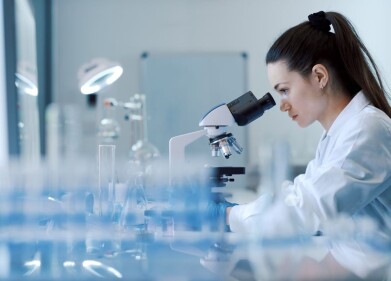-
 Alannah Hallas and Mario González-Rivas (Credit: CLS)
Alannah Hallas and Mario González-Rivas (Credit: CLS)
News & views
Materials discovery could help meet Electronic Industry needs
Mar 30 2023
A material made of common elements that has the potential for use in everyday electronics such as cellphones and which could make them both cheaper more environmentally friendly, has been discovered by researchers at the University of British Columbia.
The research team used the REIXS beamline of the Canadian Light Source (CLS) University of Saskatchewan to quantify the material’s behaviour: “We’ve recently discovered a family of materials that have an exciting property of having very adjustable magnetic properties,” said lead researcher Alannah Hallas, an Assistant Professor in the Department of Physics and Astronomy at UBC. “Magnetic materials are super important because they are the backbone of many modern technologies.”
The high-entropy material is composed of a disordered mixture of five or more elements. While entropy, or the disorder of a system, is usually considered a disadvantage, this new material proved to have useful properties such as its adjustable magnetism.
The research, conducted through the Stewart Blusson Quantum Matter Institute, involved creating the material under high heat and rapidly cooling it to create a disordered crystal lattice. This disorder was then imaged at the CLS.
Mario González-Rivas, a PhD candidate working on the project, said that making the high-entropy crystals was not the most difficult part of the experiment. Rather, the challenge was finding the optimal level of disorder: “There’s a fair amount of optimizing to do . . . (but) the method we describe in the paper is scalable and is industrially relevant,” he said.
The team’s breakthrough is important because many magnetic materials for high-tech products are made from rare earth elements — which are relatively rare. They are also difficult to mine and to purify.
“This type of research could be promising for any application that needs magnetic materials,” added Hallas. “Just by changing the ratios of the atoms, we can elicit a wide range of behaviours and strengths.”
While the field of high-entropy materials is relatively new — having first appeared in scientific literature in 2015 — significant strides are already being made, including from the Hallas team with help from the CLS.
More information online
Digital Edition
Lab Asia 31.6 Dec 2024
December 2024
Chromatography Articles - Sustainable chromatography: Embracing software for greener methods Mass Spectrometry & Spectroscopy Articles - Solving industry challenges for phosphorus containi...
View all digital editions
Events
Jan 22 2025 Tokyo, Japan
Jan 22 2025 Birmingham, UK
Jan 25 2025 San Diego, CA, USA
Jan 27 2025 Dubai, UAE
Jan 29 2025 Tokyo, Japan


















